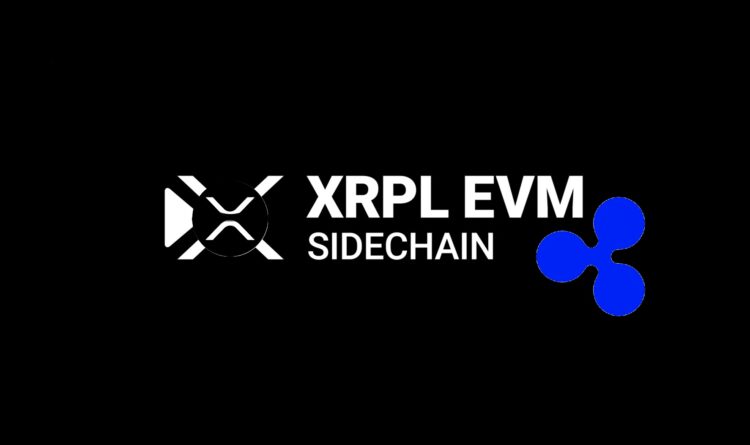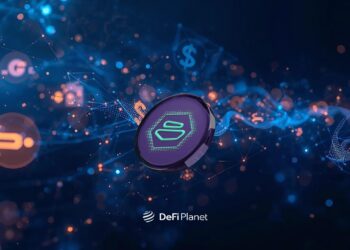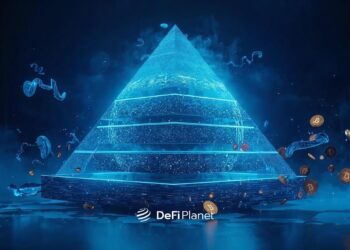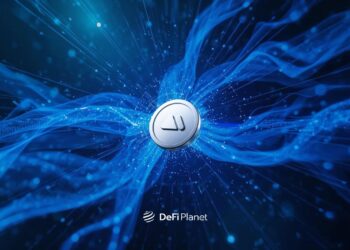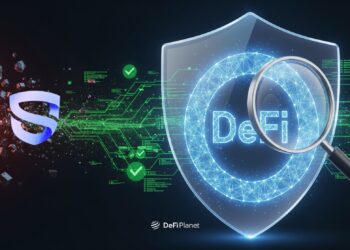Blockchain innovation is a continuous process, and with the emergence of the XRPL EVM sidechain, a significant step towards greater interoperability and utility has been taken. This development aims to connect the rapid payment capabilities of the XRP Ledger with the extensive smart contract functionalities of Ethereum. This integration represents more than just a technical enhancement; it signifies a major transformation that could redefine XRP’s position in decentralized finance (DeFi) and alter the broader crypto environment.
This article will critically examine the XRPL EVM sidechain, clarify its operation, and assess its impact on XRP and the broader digital asset market.
The Search for Interoperability
For years, blockchain ecosystems have operated in silos. The XRP Ledger (XRPL), celebrated for its speed and efficiency, has long been the backbone of cross-border payments. Yet, it lacked the programmable flexibility that made Ethereum the darling of DeFi and decentralized applications (dApps).
1/ The XRPL EVM Sidechain is live on mainnet: https://t.co/CJ61aqZvhp
After years of building with @Peersyst and the XRPL community, devs can now build, port, and deploy cross-chain and EVM-only dApps using XRP as gas, with a direct bridge to the XRPL.
Get started ????
— RippleX (@RippleXDev) June 30, 2025
The Ethereum Virtual Machine (EVM) is the engine powering Ethereum’s smart contracts, enabling developers to build everything from decentralized exchanges to NFT marketplaces. The XRPL EVM sidechain is designed to bring EVM compatibility to the XRPL, allowing Ethereum-based smart contracts to run seamlessly within the XRP ecosystem.
How the XRPL EVM Sidechain Works: The Architecture
At its core, the XRPL EVM sidechain is a parallel blockchain that operates alongside the main XRPL. It is built using an EVM-compatible framework, enabling developers to deploy and interact with Ethereum smart contracts using familiar tools such as Solidity and MetaMask.
Bridge Mechanism: The sidechain is connected to the main XRPL through a two-way bridge. This bridge allows users to move assets—especially XRP—between the XRPL and the EVM sidechain. When a user wants to interact with an Ethereum dApp using XRP, their tokens are locked on the XRPL and minted as wrapped assets on the sidechain.
Validator Network: The sidechain operates with its own set of validators, distinct from the main XRPL. These validators are responsible for maintaining consensus and securing the sidechain while also facilitating the bridge’s operations.
Interoperability Layer: The EVM sidechain is fully compatible with Ethereum’s toolset, meaning developers can port existing dApps or build new ones without learning a new language or framework.
Key Features
- Ethereum Compatibility: Full support for Ethereum smart contracts, tools, and wallets.
- Asset Portability: Seamless transfer of XRP and other assets between XRPL and the EVM sidechain.
- Scalability: Offloading smart contract execution to the sidechain reduces congestion on the main XRPL, preserving its speed and efficiency.
- Decentralized Applications: Unlocks the potential for DeFi, NFTs, and more within the XRP ecosystem.
Why XRPL EVM is a Game-Changer
- Opening up XRP to DeFi
The XRPL EVM sidechain opens the floodgates for decentralized finance on XRP. For the first time, developers can build DeFi protocols—lending platforms, decentralized exchanges, stablecoins—using XRP as the base asset. This not only increases utility but also attracts liquidity from Ethereum’s vibrant DeFi ecosystem.
- Bridging Two Worlds
By connecting XRPL and Ethereum, the sidechain creates a symbiotic relationship. XRP holders gain access to Ethereum’s dApps, while Ethereum developers can tap into XRPL’s fast and low-cost transactions. This interoperability could drive adoption on both sides, fostering a more integrated crypto landscape.
- Developer Magnet
The EVM sidechain lowers the barrier for Ethereum developers to build on XRPL. Instead of learning a new language or framework, they can deploy existing Solidity contracts with minimal changes. This could spark a wave of innovation and bring fresh talent into the XRP ecosystem.
- Enhanced Scalability and Efficiency
By offloading complex computations to the sidechain, the main XRPL remains optimized for fast, low-cost payments. This division of labour ensures that XRPL’s core strengths are preserved while expanding its capabilities.
- Strengthening XRP’s Market Position
With DeFi, NFTs, and dApps now within reach, XRP can compete more directly with Ethereum, Solana, and other smart contract platforms. This diversification could boost XRP’s relevance and resilience in an ever-evolving market.
The Roadblocks Ahead
- Centralization Concerns
The validator set for the EVM sidechain is distinct from XRPL’s. If these validators are not sufficiently decentralized, the sidechain could become a weak link, exposing users to risks not present on the main XRPL.
- Security Risks of Bridging
Bridges have historically been vulnerable points in blockchain ecosystems, with several high-profile hacks resulting in significant losses. The XRPL EVM bridge must undergo rigorous security audits to ensure user funds are protected.
- Sustainability of Sidechains
There is skepticism about the long-term viability of sidechains. If adoption stalls or if the sidechain fails to attract enough validators and users, it could become a ghost town, undermining its value proposition.
- Competition from Other Solutions
Other interoperability solutions, such as Polkadot, Cosmos, and LayerZero, are also vying to connect disparate blockchains. The XRPL EVM sidechain must differentiate itself to remain competitive in this crowded field.
What It Means for XRP
The XRPL EVM sidechain could be the catalyst that propels XRP into new realms of utility. No longer confined to payments, XRP can now serve as collateral in DeFi protocols, fuel NFT marketplaces, and power decentralized applications.
Increased Demand: As more use cases emerge, demand for XRP could rise, potentially impacting its price and liquidity.
Broader Adoption: Enterprises and developers previously deterred by XRPL’s lack of smart contract support may now reconsider, leading to broader adoption.
Resilience: Diversifying XRP’s use cases makes it less vulnerable to regulatory or market shocks that may impact its payments business.
Recent announcement regarding XRP Ledger Integration
Uphold announced support for XRPL’s version 2.5.0 upgrade, which includes a permissioned decentralized exchange (DEX) for regulated entities, enabling KYC-gated trading and stablecoin flows. This move indicates Uphold’s active involvement in supporting XRPL’s infrastructure, but it isn’t a new integration announcement.
We’re bringing you USDC on XRPL!
Enjoy the flexibility of moving your $USDC to your Uphold and external XRPL wallet.
The XRP Ledger is designed to connect financial institutions, payment providers, and individuals, enabling fast and low-cost cross-border crypto transactions pic.twitter.com/gpY0mtj3lO
— Uphold (@UpholdInc) June 19, 2025
The most recent announcement regarding Banxchange and the XRP Ledger highlights Banxchange’s Institutional Tokenization Program, set to launch on August 1, 2025. This program aims to onboard institutions, streamline asset issuance, and drive real-world adoption on the XRP Ledger.
Banxchange has also partnered with Ripple to enable small businesses worldwide to access Ripple’s On-Demand Liquidity, tapping into a $16 trillion market. This integration positions Banxchange as a key platform for token launches on the XRP Ledger, with its native token, BXE, burning 1,000 tokens per launch to support institutional access.
Ondo Finance has also recently launched its tokenized U.S. Treasuries product, Ondo Short-Term U.S. Government Treasuries (OUSG), on the XRP Ledger (XRPL), marking a major step forward for institutional finance on blockchain. The move enables qualified investors to mint and redeem OUSG directly using Ripple’s enterprise-grade stablecoin, RLUSD.
Implications for the Wider Crypto Market
The XRPL EVM sidechain is more than just a technical upgrade—it’s a statement about the future of blockchain interoperability.
Cross-Pollination of Ecosystems:
The ability to move assets and applications between XRPL and Ethereum could inspire similar initiatives across other blockchains, accelerating the trend towards a multi-chain future.
DeFi Expansion:
By bringing XRP into the DeFi fold, the sidechain could unlock new liquidity pools and financial products, benefiting the entire crypto market.
Competitive Pressure:
Other blockchains may feel compelled to enhance their own interoperability features, driving innovation across the industry.
Future Outlook: What’s Next for XRPL EVM?
The XRPL EVM is now successfully attracting players and top-tier talents. Although the XRPL EVM sidechain is still in its early days, its potential is vast. Future developments could include:
Expanded Asset Support:
Bringing more tokens and assets into the XRPL EVM ecosystem.
Decentralized Governance:
Moving towards a more decentralized validator set to enhance security and trust.
Integration with Other Chains:
Building bridges to additional blockchains, further expanding XRPL’s reach.
Ecosystem Growth:
As more developers and projects join, the XRPL EVM sidechain could become a vibrant hub of innovation.
XRP Rewrites Finance
According to a recent announcement by Brad Garlinghouse at a Singapore Press conference, RLUSD will now be accepted as collateral by Hidden Road, a global prime brokerage firm, which is expected to facilitate real-time, cross-market trading for institutional clients. This integration aims to enhance capital efficiency and bridge the gap between traditional and digital finance, showcasing Ripple’s broader strategy to expand its utility and adoption in the financial sector. Ripple’s pursuit of a US banking license further solidifies its position under federal oversight and as a trailblazer in the digital assets arena.
Traditional XRPL vs. XRPL EVM Sidechain
Feature | Traditional XRPL | XRPL EVM Sidechain |
| Smart Contract Support | No | Yes(EVM Compatible) |
| Asset Portability | Limited | Seamless bridging |
| Developer Tools | Native XRPL tools | Ethereum toolset |
| Use Cases | Payments, transfers | DeFi, NFTs, dApps |
| Scalability | High | Enhanced via sidechain |
| Security Model | XRPL validators | Separate validators |
In Pursuit of a Multi-Chain Future
The XRPL EVM sidechain marks a pivotal moment in the evolution of the XRP Ledger and the broader crypto universe. By fusing the speed of XRPL with the programmability of Ethereum, it unlocks new possibilities for developers, investors, and enterprises alike. Yet, as with all innovations, success will depend on robust security, genuine decentralization, and sustained ecosystem growth.
Will XRPL EVM be the bridge that unites two titans of blockchain, or will it become just another footnote in the relentless march of crypto progress? Only time and the collective ingenuity of the community will tell.
Disclaimer: This article is intended solely for informational purposes and should not be considered trading or investment advice. Nothing herein should be construed as financial, legal, or tax advice. Trading or investing in cryptocurrencies carries a considerable risk of financial loss. Always conduct due diligence.
If you would like to read more articles like this, visit DeFi Planet and follow us on Twitter, LinkedIn, Facebook, Instagram, and CoinMarketCap Community.
Take control of your crypto portfolio with MARKETS PRO, DeFi Planet’s suite of analytics tools.”

